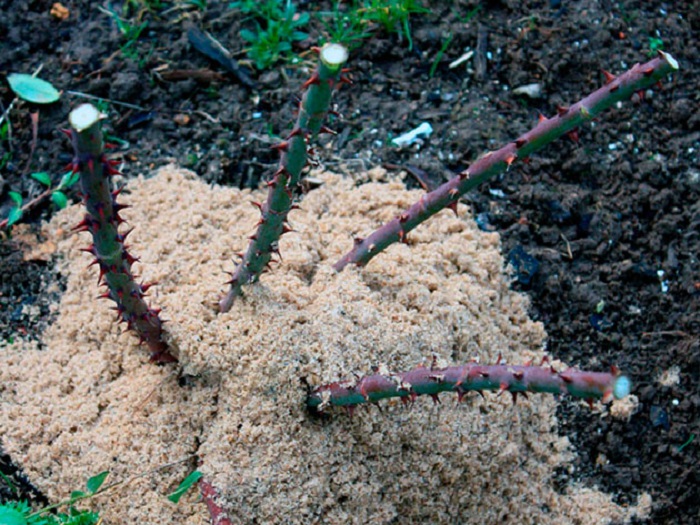 It is unlikely that in the ennobled garden or near a beautiful private house there are not a couple of rose bushes. Such beautiful beauties from the distant past were a unique decoration of the homestead territory, emphasizing the high taste of the owners of the premises. Until now, the cultivation of these bushes is a real cult, so the topic of sheltering roses for the winter in the suburbs does not lose its relevance.
It is unlikely that in the ennobled garden or near a beautiful private house there are not a couple of rose bushes. Such beautiful beauties from the distant past were a unique decoration of the homestead territory, emphasizing the high taste of the owners of the premises. Until now, the cultivation of these bushes is a real cult, so the topic of sheltering roses for the winter in the suburbs does not lose its relevance.
Content
General principles
There is a large varietal variety of roses on sale, which allows you to create real floral arrangements on the site that will delight your eyes with their bloom until late autumn. The most popular are park, climbing, ground cover, floribunda and others.
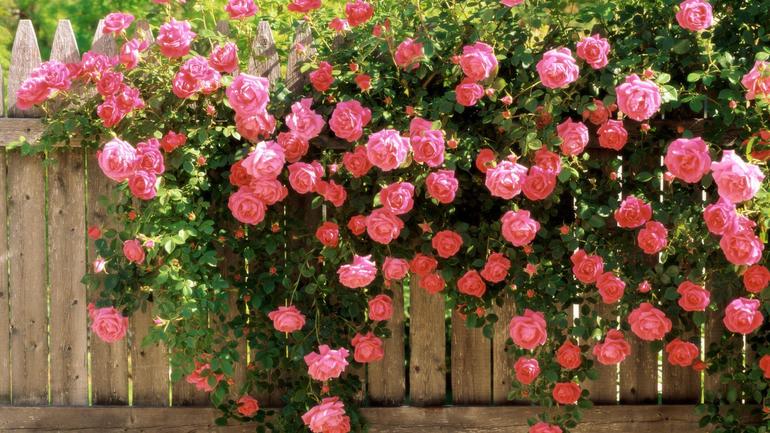
But like many other plants, roses need good shelter for the winter, especially if they are cultivated in the suburbs. Indeed, if flower growers from the southern regions can slightly cover their roots or leave bushes on the street without additional insulation, then this condition is mandatory in the middle lane. Otherwise, wintering roses near Moscow will lead to death. And even if the flowers manage to survive the winter under the thickness of snow, with the advent of the warm season, frozen shoots will not be able to give abundant flowering.
Optimal timing
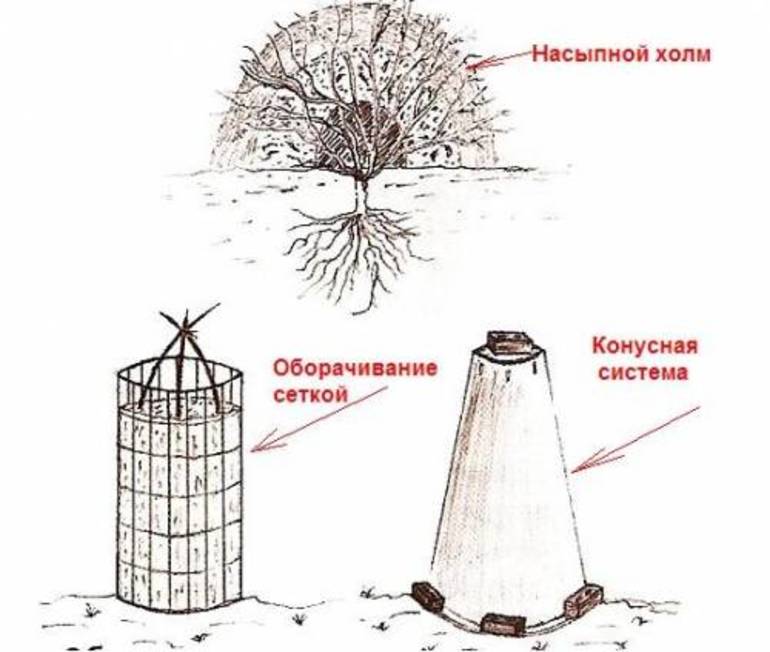 To prevent such a development of events, each grower needs to clarify how and when to cover roses in the suburbs. Regardless of variety, the rose is considered a very strong and cold-resistant plant, capable of surviving with a serious drop in temperature (up to minus 15 degrees Celsius). If the bush has been exposed to frost for a long time, it will die. Short-term frosts are not terrible for the culture.
To prevent such a development of events, each grower needs to clarify how and when to cover roses in the suburbs. Regardless of variety, the rose is considered a very strong and cold-resistant plant, capable of surviving with a serious drop in temperature (up to minus 15 degrees Celsius). If the bush has been exposed to frost for a long time, it will die. Short-term frosts are not terrible for the culture.
A more dangerous phenomenon for roses is the debate that occurs when the shelter is too early for the winter, when the ambient temperature is high enough, and the grower has already hurried to cover the bush with insulating material. And if in its quality was used not fabric, but synthetics - the death of culture is inevitable. It is almost impossible to avoid such an outcome with untimely warming, so you do not need to rush and start sheltering roses for the winter in the Moscow Region when you first lower the thermometer below zero. Short and not very intense frosts in September are not dangerous for roses.
Preparing for the winter
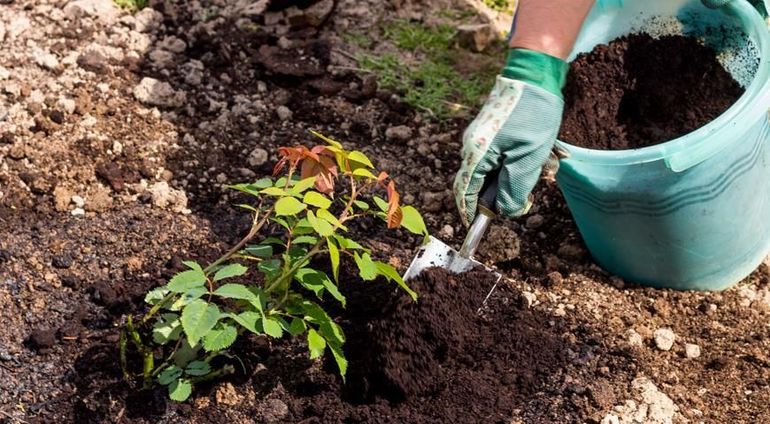 During the warm season, the flowering of roses becomes almost continuous, which is why the plant draws all the nutrients and minerals from the ground. Even with abundant fertilizing, the soil is depleted and needs to be additionally fertilized for the winter.
During the warm season, the flowering of roses becomes almost continuous, which is why the plant draws all the nutrients and minerals from the ground. Even with abundant fertilizing, the soil is depleted and needs to be additionally fertilized for the winter.
Florists begin such events in early to mid-September, using special autumn preparations as fertilizers. They should consist of the correct "autumn" components, because if you add summer fertilizing to the soil, vegetation processes will begin in the bush, and it will begin to produce green shoots, not having time to prepare for frosts.Based on this, it is better to completely abandon organic dressing.
Among the promising fertilizers for the fall, there are:
- potassium;
- calcium;
- phosphorus.
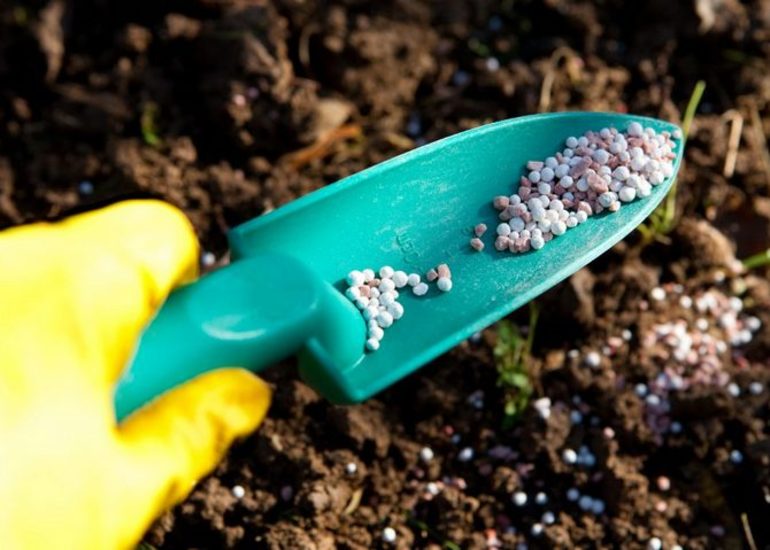
You can try to create a highly effective tool with your own hands. To do this, you need to dilute any component in a bucket of water, and then moderate each bush with it. Experienced growers recommend a proportion of 15 g of fertilizer per 10 liters of water. But you can not waste time and buy a ready-made mixture in a florist shop, and then process the culture with it.
Trimming events
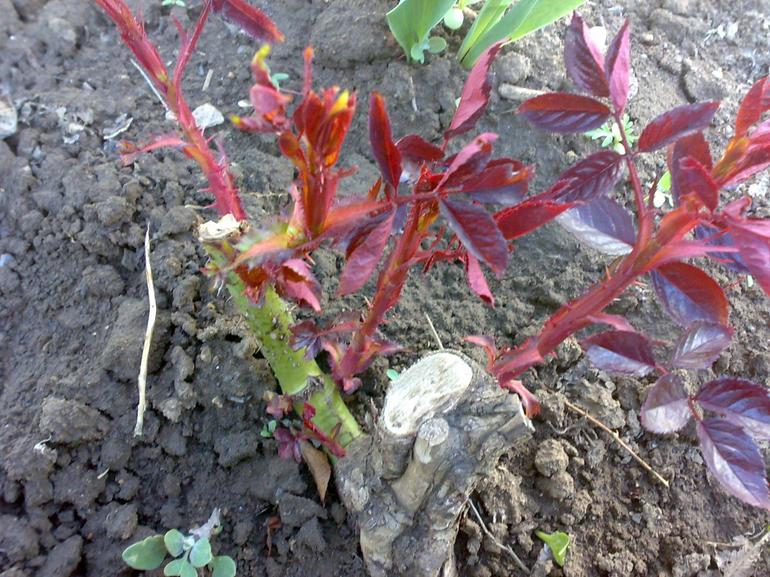 The next key step in preparing a climbing rose for winter is pruning. When the florist decides to cut such a culture, starting from the current weather and an approximate forecast for the next week. Not only the resistance of the culture to frost, but also its growth in the next season, depends on crop events. In the absence of the procedure, the bushes simply will not be able to bloom in spring or will be hit by cold.
The next key step in preparing a climbing rose for winter is pruning. When the florist decides to cut such a culture, starting from the current weather and an approximate forecast for the next week. Not only the resistance of the culture to frost, but also its growth in the next season, depends on crop events. In the absence of the procedure, the bushes simply will not be able to bloom in spring or will be hit by cold.
Proper pruning produces a good immunity in the plant, making it resistant to frost and disease. The pruning principles are determined not only by climatic conditions, but also by varietal nuances. Nevertheless, there are generally accepted rules that apply to all varieties of roses.
Already in mid-September (if we are talking about the middle lane, where the Moscow region is located), from the bushes you can remove all the foliage that begins to fade. This procedure will prevent excessive evaporation of valuable moisture, as well as protect the culture from decaying leaves under cover. Besides foliage can be a carrier of dangerous infectionsthat are problematic to find during visual inspection.
By lowering the temperature to zero, rose bushes can be pruned. Tall specimens are pruned first. As a garden tool, a sharp secateurs are used, guaranteeing quick and painless removal of excess areas. The shoots are cut so that 1 cm remains above the upper kidney.
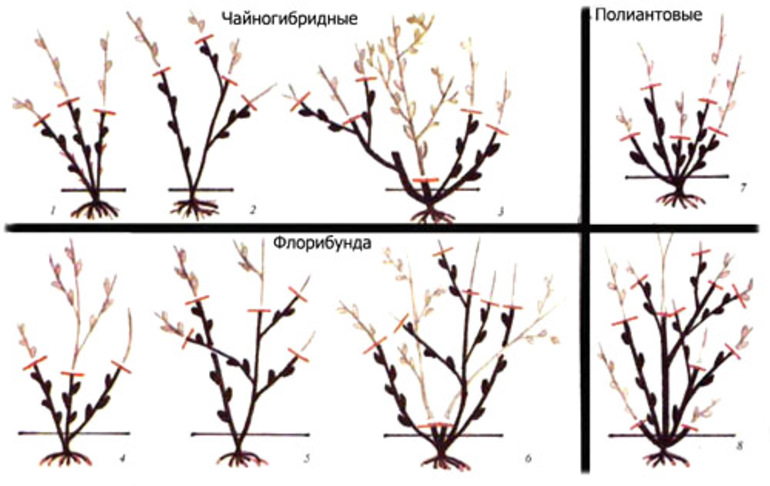
If the florist mistakenly cut the rose too much, this is not a cause for concern. The main task is to avoid root damage, and flowering will be possible on new shoots, which will begin to form upon the return of heat in the spring. Moreover, deep pruning can be useful, because it plays a rejuvenating role and is indispensable for those bushes that are beginning to actively produce new shoots.
Important points
When growing undersized varieties, dry inflorescences are removed on the bushes and the highest shoots are slightly shortened. The optimal shortening length is 10-15 cm.
Often in park crops shoots with buds are formed, which lend themselves to abundant flowering. Cutting off such instances is not necessary, because the rose will begin to intensively build up new shoots. This principle applies to any early pruning, which contributes to the release of new lateral branches. Cutting off such parts of the bush is better after the formation of a stable cold.
Spraying and hilling bushes
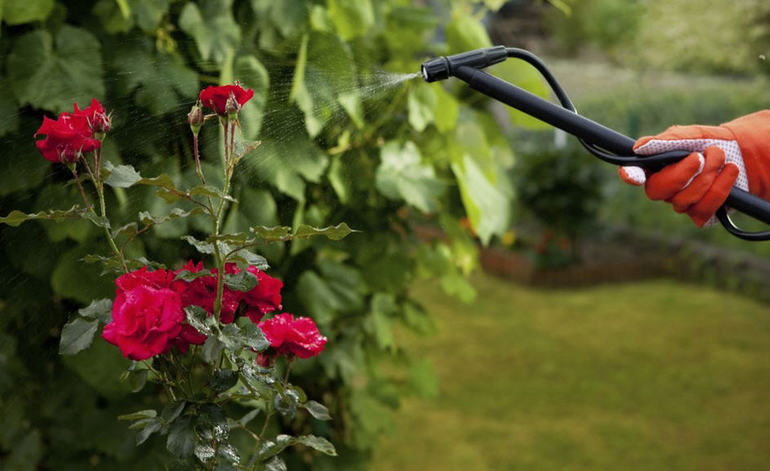 Each climbing bush needs regular spraying with special pest preparations.Rosa is a very vulnerable culture, which is exposed to all kinds of diseases and can become an attractive environment for the development of dangerous diseases.
Each climbing bush needs regular spraying with special pest preparations.Rosa is a very vulnerable culture, which is exposed to all kinds of diseases and can become an attractive environment for the development of dangerous diseases.
To avoid infection, high-quality antifungal and antiviral agents should be used. Old grandfather methods in the form of a tobacco solution are powerless here. It is better to give preference to the following options:
- inkstone;
- Bordeaux liquid.
 The next stage of caring for rose bushes is hilling. After successful pruning, top dressing and spraying of the plant, you can start hilling it, loosening the soil at this time. This action will provide an effective air passage due to the lack of weeds, and also protect the rose from the effects of cold weather.
The next stage of caring for rose bushes is hilling. After successful pruning, top dressing and spraying of the plant, you can start hilling it, loosening the soil at this time. This action will provide an effective air passage due to the lack of weeds, and also protect the rose from the effects of cold weather.
Peat, humus or dry foliage is poured over the ground. It is important to make sure that it is really dry, because in a humid environment dangerous viruses, fungi and parasites can develop. Hilling is best done in dry, calm weather. Any moisture will lead to irreversible effects.
The subtleties of shelter
After successfully preparing the rose bushes for wintering, you can proceed to the next, and perhaps the most important stage, the shelter. Today, flower growers harbor culture in many ways, but the most relevant include:
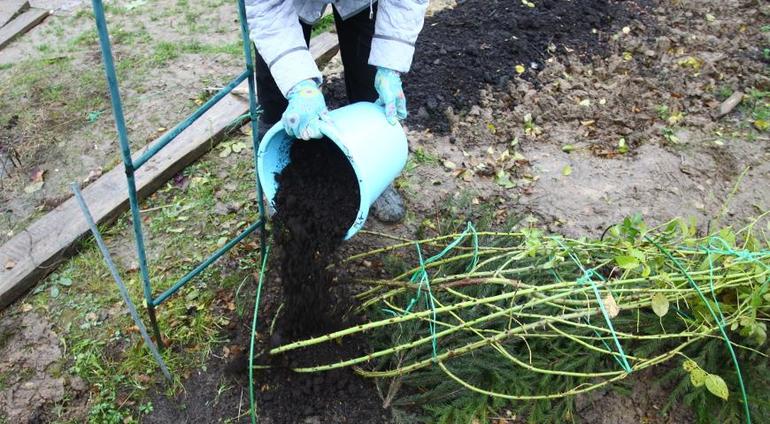 Digging up. After rooting out and placing the mulching layer on top of the soil, you can put spruce branches or foliage on top. With the arrival of precipitation in the form of snow, the rose will be well protected. Using this method, the main thing is to calculate the timing correctly, because if you cover the bush too early, it will get wet in the rain and begin to rot. But one of the main rules of shelter for the winter is to ensure maximum dryness. Also, some gardeners completely bury the flower, filling it with loose and dry soil.
Digging up. After rooting out and placing the mulching layer on top of the soil, you can put spruce branches or foliage on top. With the arrival of precipitation in the form of snow, the rose will be well protected. Using this method, the main thing is to calculate the timing correctly, because if you cover the bush too early, it will get wet in the rain and begin to rot. But one of the main rules of shelter for the winter is to ensure maximum dryness. Also, some gardeners completely bury the flower, filling it with loose and dry soil.- Dry shelter. Above the bush, a protective shelter is made of plywood or pegs, to which a covering material is attached. Thus, a specific dome will appear above the bush, over which snow will soon appear.
- Cloth wrapping. Gardeners also use a simpler method, wrapping the stems with a warm cloth, which not only acts as a heat-insulating layer, but also prevents freezing of the roots. However, due to the mass of disadvantages, this method has not found wide application.
Rules and recommendations
Without a doubt, the success of growing climbing roses in the area directly depends on the proper shelter of the bushes for the winter. Only in rare cases, these beauties bloom on last year's shoots. The rest, the grower needs to take good care of the safety of roots and stems.
Before starting the shelter, the bush must be removed from the supports, and then connect the shoots with each other in the amount of 3-4 stems in one bunch. Then they should be carefully laid on the ground and protected from the cold by a suitable shelter method.
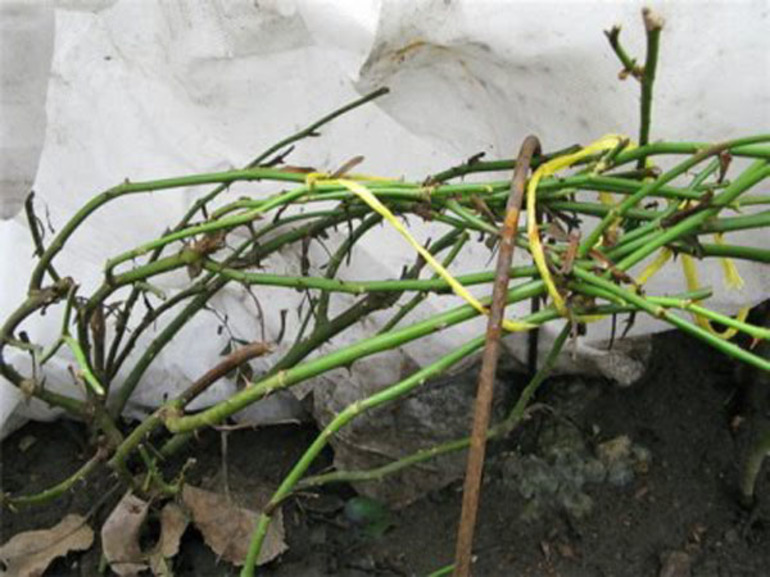
For this, it is important to carry out complex processing of bushes and hilling, getting rid of the remaining foliage. Shortening of the lashes occurs no more than a third.
When bending roses to the ground, it is important to take special care - lignified lashes will quickly break. To avoid this, you need to bend them gradually. After laying the connected lashes and fixing them with the help of arcs, a shelter is installed on top. Climbing bushes like dry option more. Above them, you can equip a shelter from boards, boards or plywood, which is additionally insulated with fabric material.With the advent of winter cold and snow, such beauties will be safe.
With the arrival of spring heat, a rose can be opened already at the end of March, slowly removing heat-insulating materials from it. You can not postpone this action, because roses negatively react to staying in an isolated space in a warm season and can vypretat. In this case, they are almost impossible to save from death.

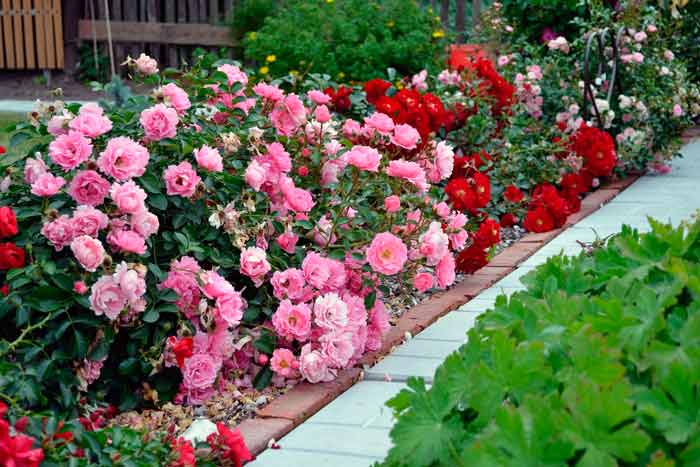 Shelter of roses for the winter: at what temperature does the robot hold
Shelter of roses for the winter: at what temperature does the robot hold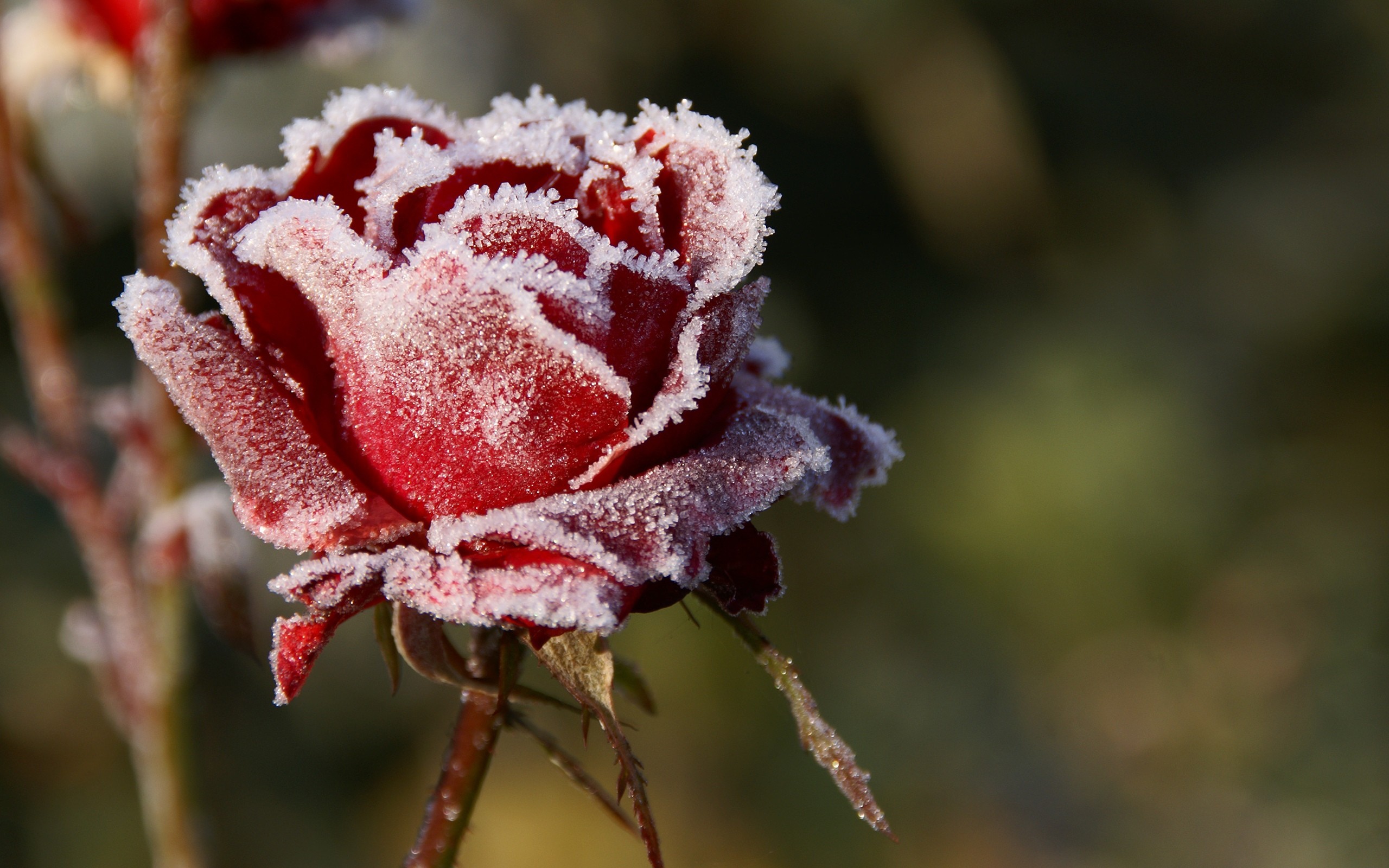 How to prune roses in the fall: timing, pruning rules, pros and cons
How to prune roses in the fall: timing, pruning rules, pros and cons What are the varieties and types of roses
What are the varieties and types of roses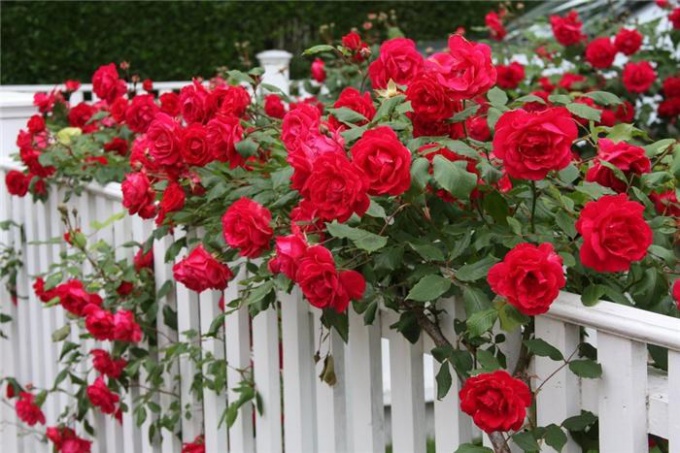 How to process roses with iron sulfate in autumn: proportions, advantages and disadvantages
How to process roses with iron sulfate in autumn: proportions, advantages and disadvantages